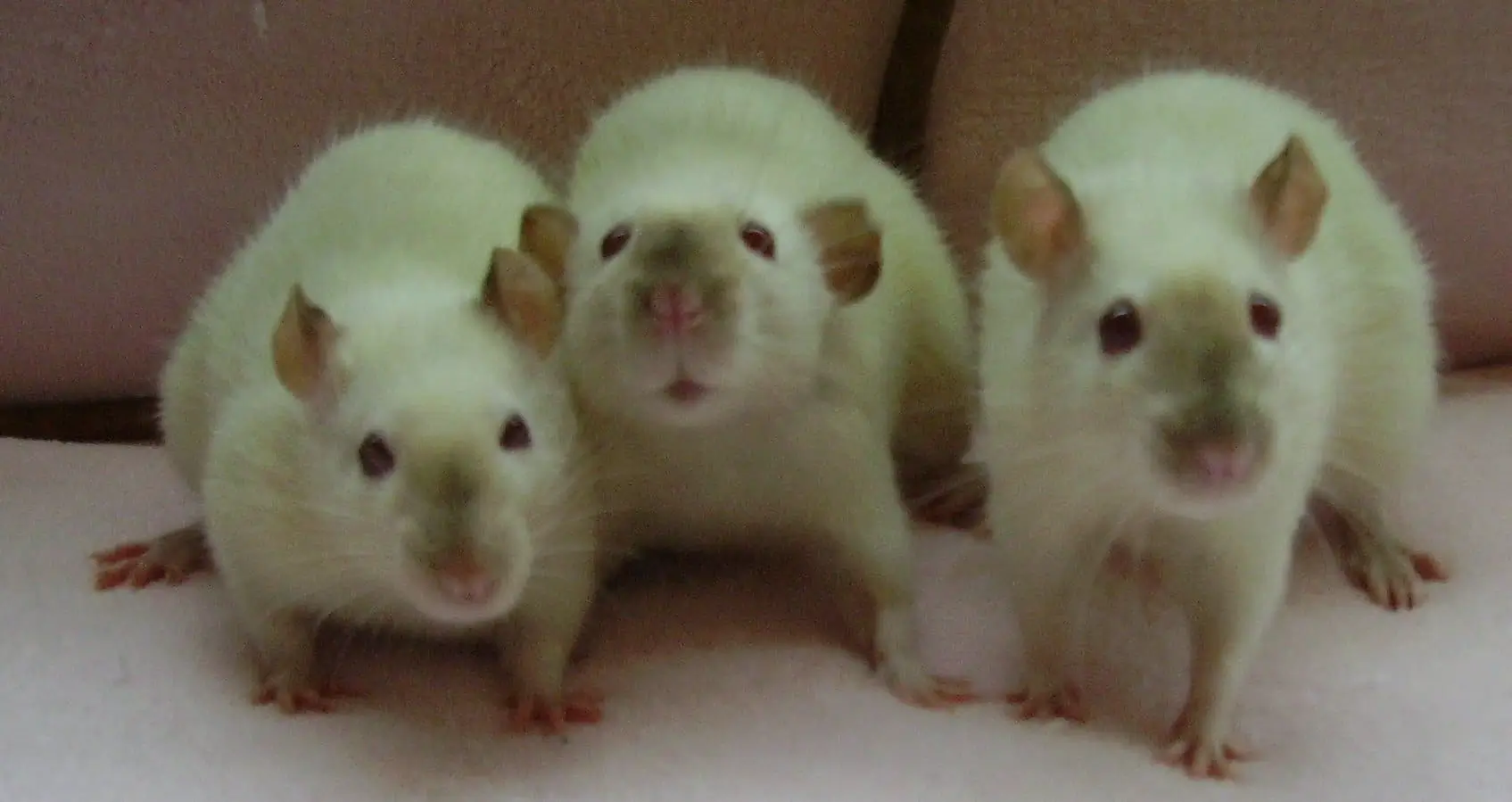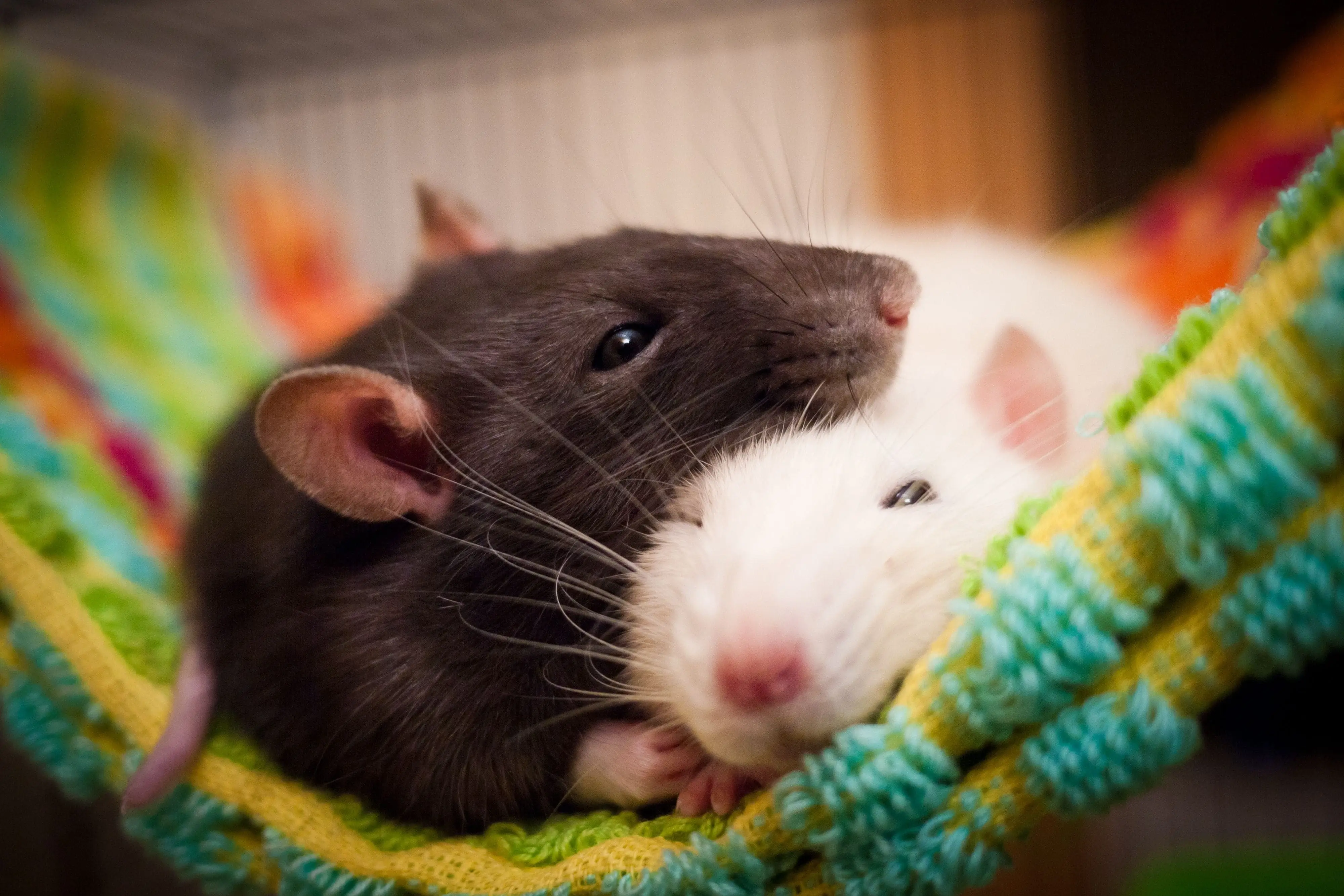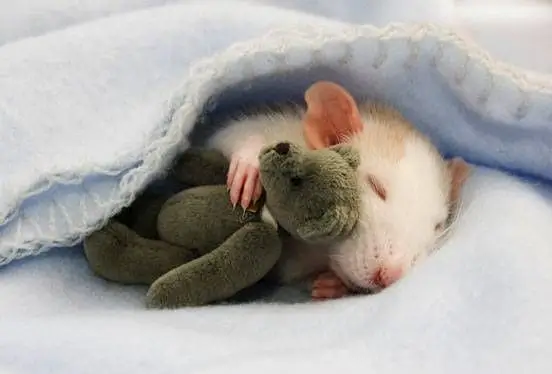The major considerations for susceptibility include exposure, living conditions, and diet.
Rats that live their entire lives indoors usually are able to avoid disease-causing bacteria such as Salmonella and Pseudomonas aeruginosa;
the latter is absent in treated water.

They may also more easily avoid vectors like cockroaches, beetles, and fleas which are essential for the spread of endemic typhus and intestinal parasites like the rat tapeworm.
Additionally, pet or laboratory rats enjoy the intrinsic benefits of having a consistent and well-balanced diet, along with access to medical care.
Porphyrin is a browny-red substance that fancy rats can develop around the eyes and nose.

It may appear like dried blood,
but is a mucus-like substance that is released at times of stress or if the rat has a respiratory infection.
It can also be caused by temporary irritation in the eye, such as the rat accidentally scratching its eye while grooming.
Mites also pose a health risk.
Mites are microscopic bloodsucking parasites that can irritate the skin of fancy rats, and if they have a preexisting health condition, it can cause them to die from their bodies' inability to handle two problems at once.
While living indoors decreases the risk of contracting certain diseases, living in close quarters with other rats, lack of proper protection from environmental factors (e.g. temperature, humidity), an unhealthy diet, and the stresses inherently associated with living in an unnatural habitat can all adversely affect a rat's health to make them more prone to specific conditions.

Specifically, Tyzzer's disease, protozoic infections (e.g. Giardia muris), and pseudotuberculosis are usually seen in stressed or young rats.
Additionally, pet rats are exposed to Streptococcus pneumoniae, a zoonotic disease caught from humans, not the same bacteria associated with pneumonia.
A human-associated fungus, Pneumocystis carinii (also found in almost all domesticated animals), is usually asymptomatic in the rat, unless the rat's immune system is compromised by illness.
If this occurs, the infection can develop into pneumonia.
Several diseases, like Rat Coronavirus Infection (RCI), Sendai virus, and Murine Respiratory Mycoplasmosis (MRM, Mycoplasma pulmonis), are prevalent simply because their highly contagious natures work in tandem with the way rats are kept in laboratories, pet stores, and by breeders.
MRM is far less likely to occur in laboratory rats than in those kept as pets.
Pet rats can also develop pituitary tumors if fed high-calorie diets,[35] and ringtail if placed in areas with low humidity or high temperatures.
Staphylococcus spp. are a mostly benign group of bacteria that commonly reside on the top of the skin, but cuts and scratches from social and hierarchical fighting can open up the pathways for them to cause ulcerative dermatitis.

There is some evidence that spayed female rats ("does") are less likely to develop mammary and pituitary tumors than intact females.
Research into prevention of common diseases and health issues in rats is ongoing.
Dietary changes are among the main suggestions for improved health and longevity in fancy rats, including feeding rat-friendly superfoods in moderation to reduce the risk of cancers, heart disease, and stroke.